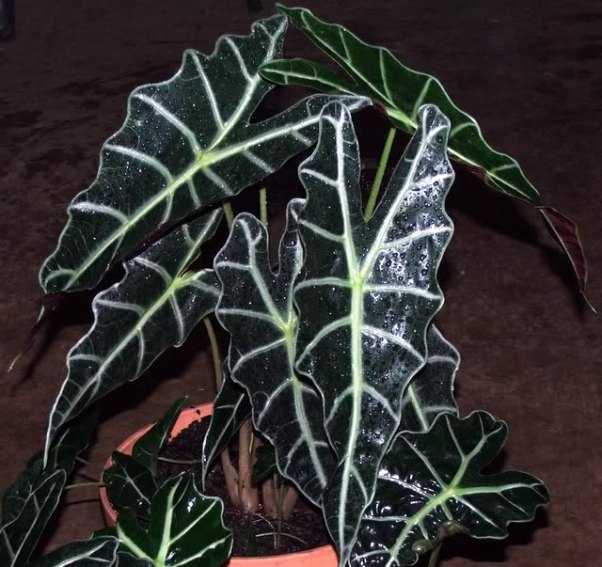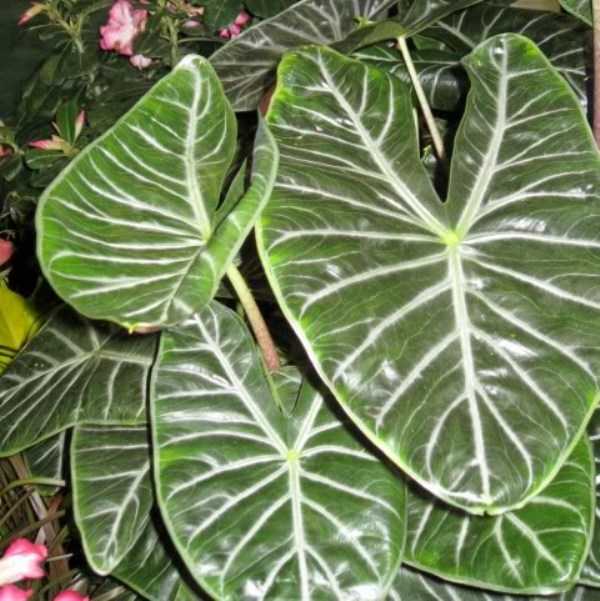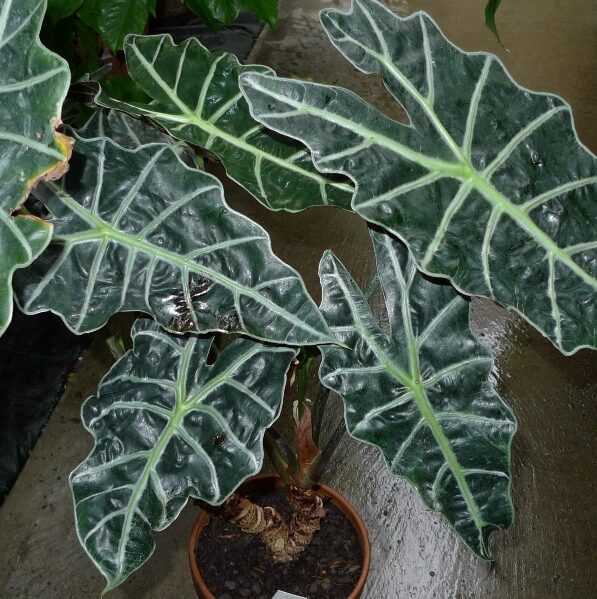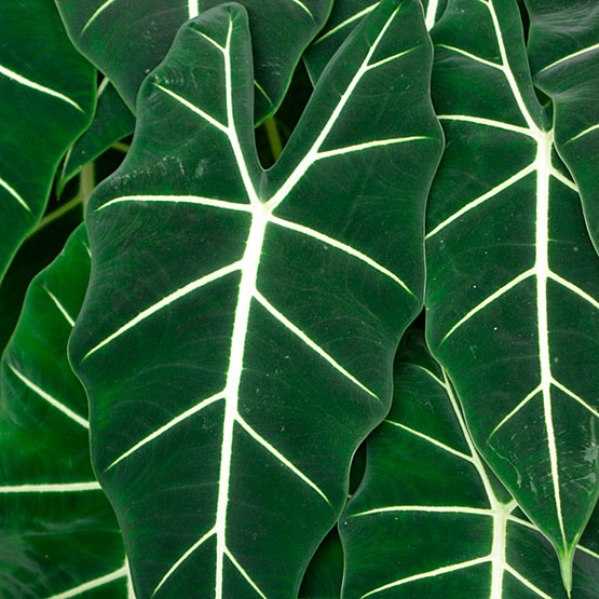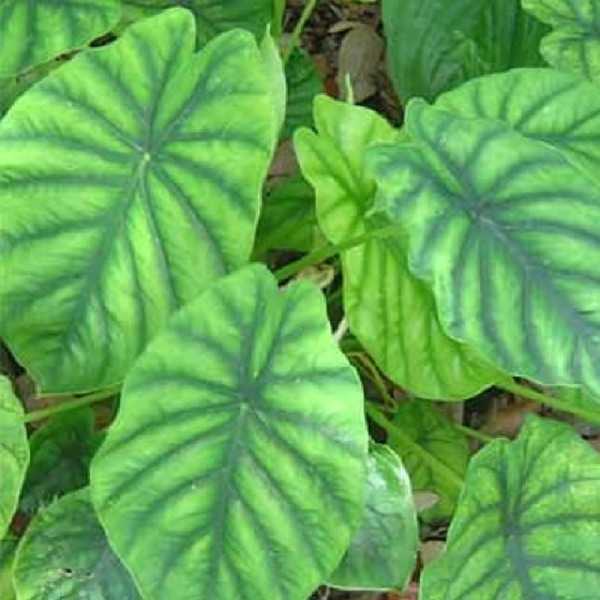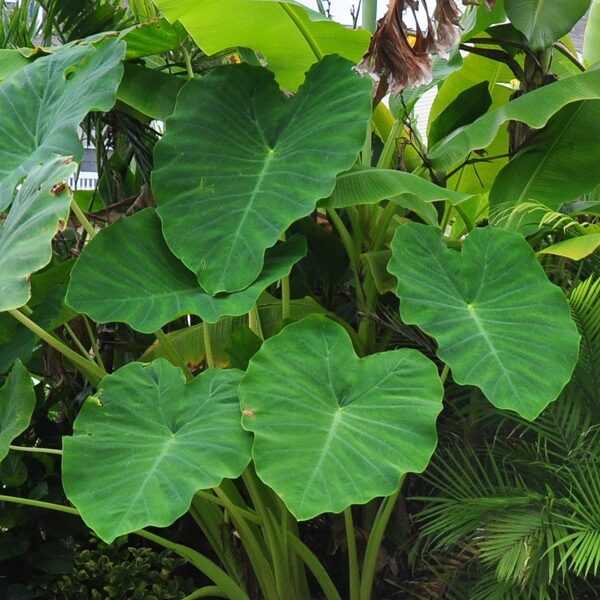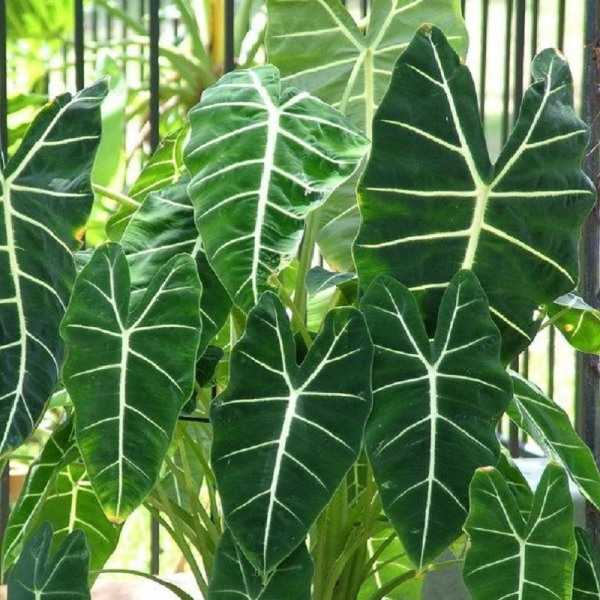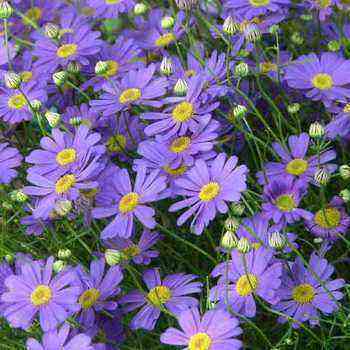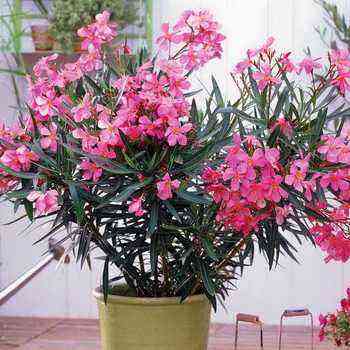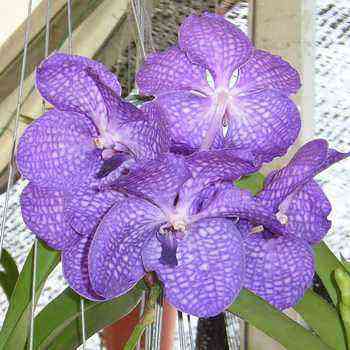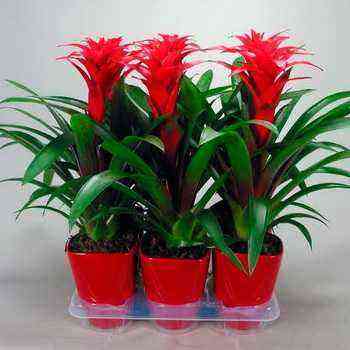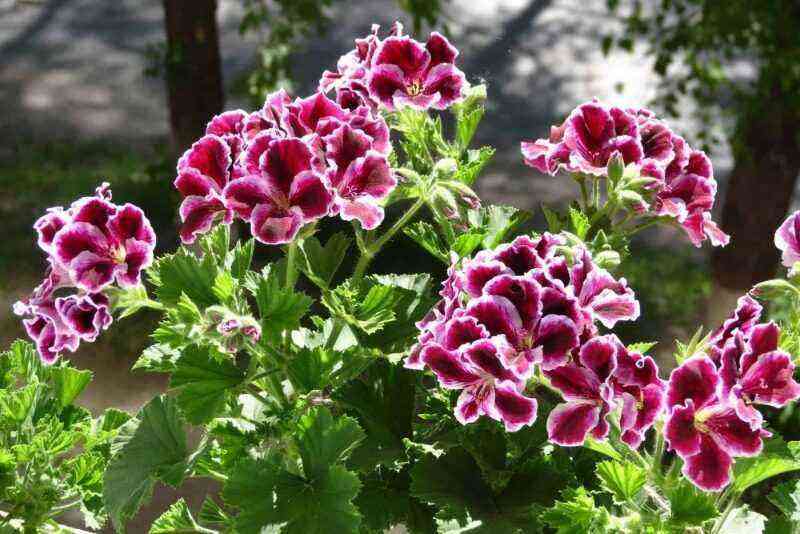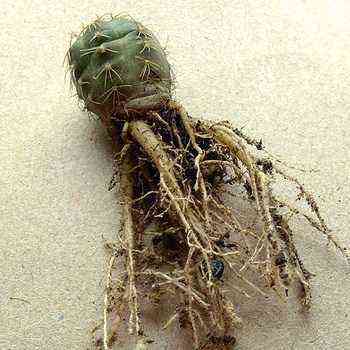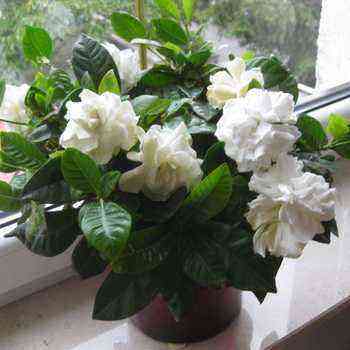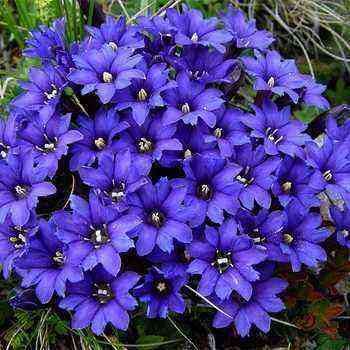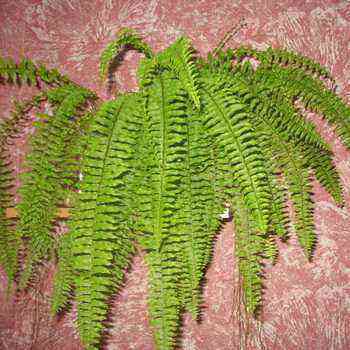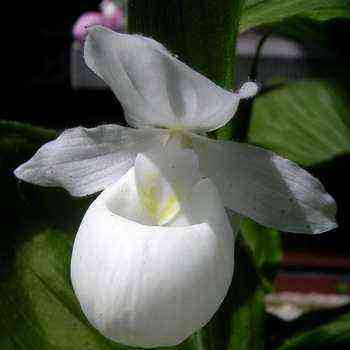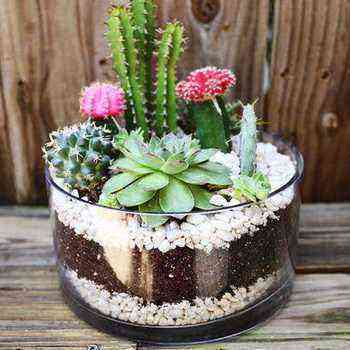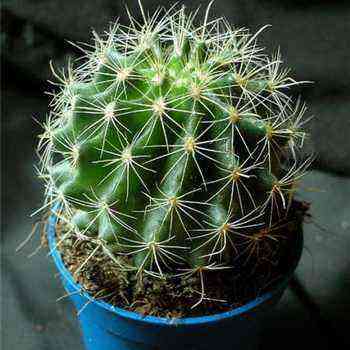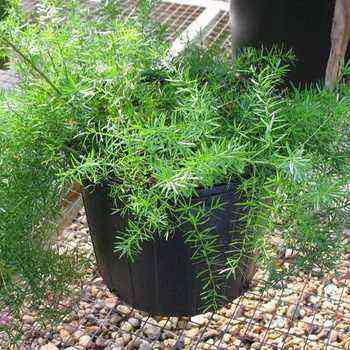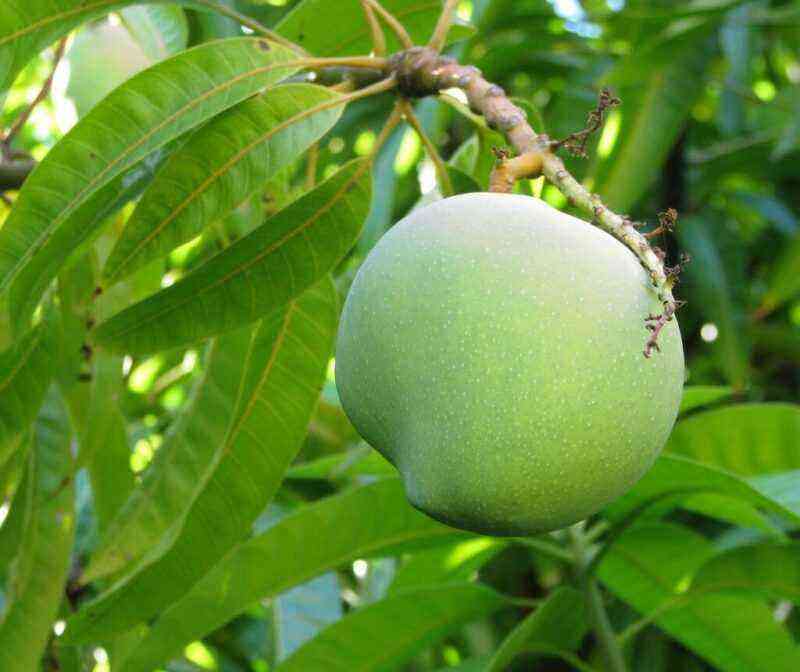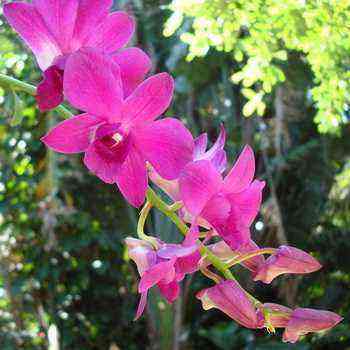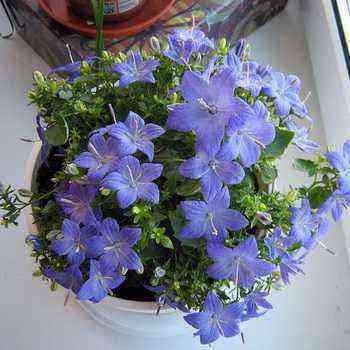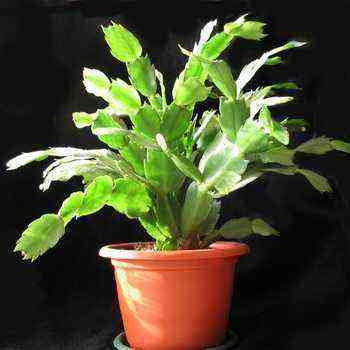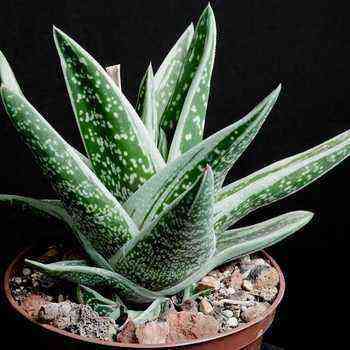Flowers Alokazia is one of the plants of the aroid family (such flowers are also called tuberous or rhizomatous). Its homeland is considered to be subtropical and tropical Asia and Eastern Australia, but, nevertheless, it is also widespread in other regions.
Description of alocasia with photo
This houseplant is widely known in our country as the shamrock. And this is far from coincidental. During the growing season, due to the large size of the leaf blade, a standard plant can provide only 3 leaves with nutrients at a time. In extreme cases, with proper care, it can be 4 sheets. When each next leaf is thrown out, the lowest one dries up and falls off.
Judging by the description and photo, alocasia has a very short trunk, which is often invisible due to the leaves in the shape of a heart or an arrow (by the way, they can reach a length of one meter). By the way, the volume of leaves depends on the species and habitat, but on average, usually one leaf. Its stem (bulb) is certainly edible, but it contains calcium oxalate, which causes irritation along with other allergens – the tongue and pharynx swell, and as a result of shortness of breath you begin to feel a sore throat. Be careful with the bottom – there is even more poison in them.
We strongly discourage eating alocasia. Such manifestations can be completely excluded only with proper processing – they should be thoroughly boiled before serving. But remember – sour fruits can reactivate the poison. Despite this, the medicinal properties of alocasia are actively used, which can be used for various diseases.
Inflorescences appear simultaneously with leaves, and its flowers are monoecious and do not have a perianth. Alocasia flower can bear fruit – these are berries in the form of a hemisphere, ellipse or cone, which are easily split in half and contain from one to five seeds.
We offer you to see a photo of alocasia, which can be grown at home:
Types of room alocasia
Many types of alocasia can be grown at home. Among them, the most popular are indoor plants, which have an excellent deciduous mass with high decorative properties. Let’s take a look at some of the types of room alocasia.
Alocasia brisbanensis is native to eastern Australia. It has large leaves on tall cuttings, reaching up to one and a half meters in height. Its summer flowers look like a lily inflorescence, but only have an unusual greenish-cream shade. The product of its flowering is red berries containing seeds inside. The plant is very poisonous, but does not cause death – the place of the burn should be rinsed immediately, experts also advise drinking milk and in no case causing vomiting.
Alocasia cucullata has many equivalent names. The distribution area is not exactly known, but it is safe to say that it is grown in such Asian regions as India, China, Burma and Sri Lanka. Alocasia has a stem up to six centimeters long, on which leaves about 30 cm long grow. It is often used in traditional Chinese medicine, and in Buddhist religion, alocasia is believed to bring good luck.
Alocasia fornicata can reach two to three meters in height, has slightly pinkish petioles and wide triangular leaves. The plant is consumed and produced in Northeast India.
Alocasia macrorrhizos is grown in the vast Pacific Islands and sold in the markets of Polynesia. As well as other species, it irritates the skin, but if you cook it for a long time, then you can use it for food. This type of alocasia is distinguished by its huge heart-shaped leaves, which are used by locals as a makeshift umbrella during tropical rains.
Alocasia odora is used as the main cold medicine in North Vietnam. But do not forget that the plant is very poisonous – in no case should it be used raw, unprocessed.
Alocasia “Polly” is a type of plant variety Alocasia sanderiana. Alocasia “Polly” has shiny, vertically placed V-shaped leaves on a stem up to two meters high. The leaves have a deep green color with streaks of white, inflorescences are creamy white. There are also orange-red inedible berries. It can be used not only as a decorative element in landscape design, but also simply as a decoration for your windowsill at home.
Alocasia: home care
At home, care for the indoor plant alocasia is carried out using the agronomic techniques we are accustomed to. This does not require special knowledge and skills. It is enough to provide timely watering, constant loosening of the topsoil, fertilization, mainly with nitrogen.
The alocasia plant can be placed both in the sun’s shade and in the sun itself. But at the same time, do not forget to water constantly – she loves high humidity, and it will be much better to grow in such conditions. It will begin to die off at temperatures below 16 ° C. To provide the plant with a long life span, it should be carefully fertilized with minerals and nourished with flower fertilizers, and the soil should be well-drained.
Planting and reproduction
Gardeners advise replanting the houseplant alocasia every year in large pots with new, fresh soil. But it is best to grow them in a greenhouse. They also need high-quality lighting if they are indoors, and weekly wet cleaning of the leaves. Unfortunately, they very rarely survive the winter and dryness of the heater, so if you strive to preserve the flower for this cold season, carefully protect it and observe all the necessary conditions. You can also try the method of slowly acclimating the plant.
The most common types of home reproduction of alocasia are the separation of either a bush or rhizomes in early spring, during the transplant process. But pay attention that the soil is necessarily new and fertilized with peat. You should also follow some precautions – the plant is poisonous, so all work must be carried out only with gloves.
Diseases of alocasia: spots and leaves turn yellow
In most cases, with proper agrotechnical care, alocasia diseases are extremely rare. Most growers are concerned about situations in which spots appear on the leaves. Unfortunately, in most cases this is a symptom of a fungal infection or spider mite infection of the plant. Help may include treating all leaves and trunks with fungicidal and insecticidal solutions. Make sure that the ground is soaked with a medicinal agent to a depth of 1 cm. It is in this layer of soil that fungi and spider mites tend to hide from the “poison”.
If the leaves of alocasia turn yellow, then an emergency transfer of the flower to another pot in fresh soil is required. During this procedure, carefully examine the root system. If there are damaged areas, then remove them with pruning shears and treat with a beard mixture or a weak solution of manganese. Usually, the leaves of alocasia turn yellow with excessive watering and rotting of tubers and root lobes. Do not flood the plants. When transplanting, provide drainage and holes for excess fluid to drain.
With too high humidity on the entire surface of the plant, including on the leaves, various pests such as scale insects, aphids, mealybugs, spider mites begin to appear. If you notice that the leaves are turning brown, it means that the roots have begun to freeze.
